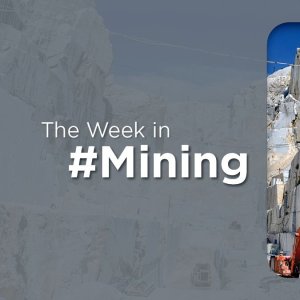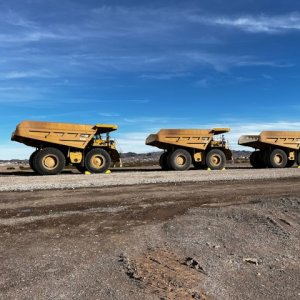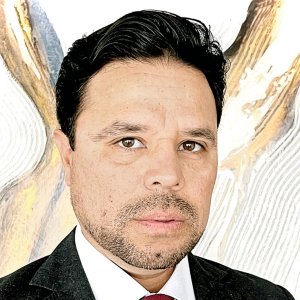Grupo México's Path to Mining 4.0

STORY INLINE POST
Q: Why is Buenavista del Zinc an interesting project from a metallurgical perspective?
A: The Buenavista del Zinc site is located in Sonora and is part of the northwestern Buenavista deposit. It is a skarn deposit that contains zinc, copper, silver and lead. Operations are projected to commence in 2022. I was part of the team that designed and developed the metallurgy for the project. I realized the importance of understanding the characteristics of the minerals in order to adequate the metallurgical technology to them.
Buenavista del Zinc has one very big and interesting challenge: copper (as Chalcopyrite) is associated with zinc (as Sphalerite). More precisely, Chalcopyrite is finely disseminated in the Sphalerite, making a challenge to separate copper and zinc. To achieve this, it is necessary to consider ultrafine grinding to reduce the particle size down to 10 microns. Nevertheless, grinding very finely presents problems of its own and thickening also becomes problematic. Also, filtration becomes more complex because filtration needs to be optimized to lose the least amount of water possible. Therefore, the question is not only how fine we should grind; but also what flow needs to be ground?
We weighed these challenges and decided to take on a different approach. Strictly speaking, we did not undertake geo-metallurgy; it was more of a pseudo-geo-metallurgy whereby we thoroughly studied minerals from the point of view of rock type and its interaction with the metallurgical scheme. We thus identified another variable in Buenavista del Zinc: the quantity and type of clay present in the mineral. There is a very particular kind of clay that absorbs large amounts of water, resulting in pulp conditions changing drastically in terms of pH level. This constitutes a limitation in the process. The clay variable was one of many we took into account when we designed the beneficiation plant’s flotation circuit.
The clay factor made it impossible to think of a conventional grinding process. Instead, we chose a SAG grinding system. Buenavista del Zinc will be the first Grupo México operation that will use a SAG mill. This will allow us to reduce particle size, taking advantage of the larger rocks in the mineral. The technology involves a steel breakage medium to remove the critical size fraction inside the mill and achieve an optimal particle size. But the greatest advantage is that SAG mills are not affected by clay.
Furthermore, the types of cells used in the process require that the floatable material can move well throughout the cell system. We need flexible control over the ascension of loaded material. We also require good dispersion in the flotation cells. These requisites are due to the amount of clay in the material to be processed and to the association of Chalcopyrite with Sphalerite. This fine association calls for the right technology in the re-grinding process. Given the quantity and grain size that we need to liberate, we implemented stirred mills, which gives us better operational control than conventional ball mills. At Buenavista del Zinc, we need to achieve a particle size of 15-20 microns to separate copper and zinc optimally and have commercially-viable products.
Q: How viable are pre-concentration technologies at large copper operations?
A: The large Copper mining are usually open-pit and, therefore, non-selective. As copper presents itself in a disseminated manner, it is necessary to process large volumes of this mineral to ensure profitable operations. Certain pre-concentration technologies can be applied to reduce the amount of non-valuable mineral (gangue), which diminishes the volume that is processed in the plant. That may result in greater productivity and sustainability.
Unfortunately, this depends on how copper is disseminated. There is always valuable mineral that is lost along with the gangue and it is important to keep it to a minimum. Therefore, preconcentration is not universally applicable. This is normal: all metallurgical processes have limits. Also, pre-concentration technologies have a limit in terms of particle size: the bigger the particle, the greater the probability of losing valuable minerals. Today, pre-concentration technology has been applied to sizes no less than half an inch. However, with that size, there is still a good probability that you are losing copper.
Another limit is treatment capacity. Normally, to do a selective separation based on the particles’ physical characteristics, there has to be a mono-layer on the surface of the preconcentration system, which reduces treatment capacity. Transferring this to a big copper operation like those we have at Grupo México would require many pre-concentrators systems to reach the nominal capacity of the large operations. The financial math starts to lose viability.
Q: What are the most common causes of energy inefficiencies during grinding?
A: The power use in mineral processing happens during particle size reduction. Not only during the grinding itself but starting at the basting stage, where the reduction of particle size begins. In the mining industry, we think of this in dollar per ton of mineral processed. Normally, the cost from basting to crushing is less than the cost involved in grinding circuits. Grinding is the costliest part of the process. There is technology available for reducing energy use in grinding circuits. However, to take advantage of this technology, it is important to understand that mineral variability in a mine occurs very frequently. What goes into grinding circuits is sometimes highly resistant, and therefore, power consumption goes through the roof.
Many mining operations are focusing on high-pressure grinding rolls for achieving energy efficiency in milling circuits. Minerals that offer high resistance to breakage are a good fit with this technology. However, one must understand the physical and chemical properties of the minerals that come into the plant. Specifically, high-pressure grinding rolls, when compared to conventional grinding circuits, have the limitation of how much clay mineral they can handle. These clay minerals have several negative effects on particle size reduction: when the clay absorbs a lot of water, particle size reduction is compromised and power efficiency is reduced. Any ideas for energy reduction during grinding must be based on a thorough mineralogical study.
Q: How ready is Mexico for Mining 4.0?
A: To make Mining 4.0 a reality, our operations have to be totally instrumentalized. That is a challenge for most miners. There are many stages in this process. At Grupo México, some operations are fully instrumented, but other we are at the first stage: achieving basic instrumentation. Once we have laid down the foundations, the plan is to begin the full implementation process. That means having complete control systems that let us continuously analyze all variables in the process. This last stage is what is commonly referred as digitalization.
Mining 4.0 presents several challenges. First, once a mining operation starts generating massive amounts of digital data, we have to decide how to analyze it to turn it into relevant KPIs. Also, cybersecurity becomes key, since all the points of connection of the process can become a digital door of access without control. A key obstacle is that in Mexico we do not yet have the right infrastructure for Mining 4.0. 5G connectivity is required. For example, in Chile, the mining industry is ahead of Mexico. I visited a mine whose operations center is thousands of miles away in an office building in Santiago. Mexico should be more committed to the transition to Mining 4.0.
Grupo México is the fourth-largest company in Mexico with a market capitalization of US$22.8 billion. Its mining division is the top copper producer in Mexico and Peru and the fourth worldwide.








 By Alejandro Ehrenberg | Journalist and Industry Analyst -
Thu, 04/29/2021 - 16:48
By Alejandro Ehrenberg | Journalist and Industry Analyst -
Thu, 04/29/2021 - 16:48










